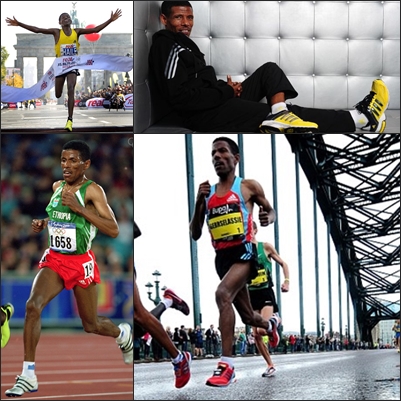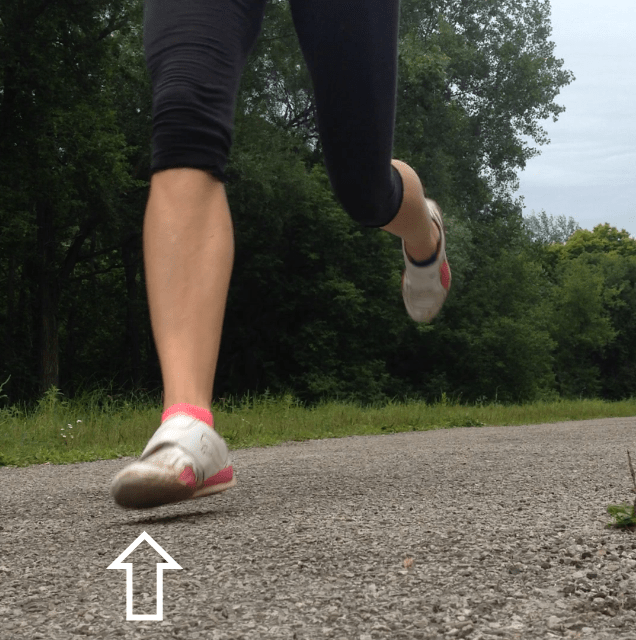Some argue that Haile Gebreselassie along with many elite East African runners are forefoot strikers. Others argue that Haile is a midfoot striker. However, in many video analysis’s of Haile’s foot strike, one foot seems to consistently forefoot strike, while the other consistently midfoot strikes.

If you watch the video below of Haile and Bekele running, paying close attention to their foot strike, you will notice the foot closest to the camera lands with a forefoot strike where the first part of the foot to contact the ground is on the 5th metatarsal head, then quickly, the rest of the foot flattens down in the order of on the 4th-3rd metatarsal heads.
In the video, at 0.45 seconds, the foot closest to the camera, i.e. their right foot, is forefoot striking whereas the foot farthest from the camera, i.e. their left foot, appears to land more mid-footed. However, at a different viewpoint angle at 1.00 min – 1.05 min in the video, you will notice a more forefoot strike landing in both feet.
Certain viewpoint angles in many video’s may create an illusion of a midfoot strike landing when really, having ran barefoot for at least a decade, Bekele and Haile are most likely making initial contact closer to the front of the foot.
Difference Between Forefoot Strike vs Midfoot Strike
I think the biggest confusion which sparks the debate on Haile’s foot strike pattern is sourced in a poor understanding of what defines a forefoot and midfoot strike.
Many think that the foot strikes the ground higher up on the balls in a forefoot strike landing, causing the foot to be positioned in extreme plantarflexion on the ground. This is an incorrect forefoot strike landing and influences Achilles and calf injuries.
The Take Home Message
A proper forefoot strike landing involves a much flatter foot placement where the height between the heel and the ground is very small, often giving the impression of a midfoot strike at first glance.
My biggest mistake when learning forefoot running was landing too high up on the balls of my foot without allowing my heel to drop to the ground to initiate the stance phase of running. As a result, I suffered a persistent Achilles injury until I invested the time in researching proper forefoot strike mechanics.

Watching Bekele and Haile run, helped me learn to avoid a toe-strike landing, and instead, I learned to relax my foot and ankle to ensure a more ‘flatter’ forefoot strike. As you can see in the picture above, my foot is not over-controlled, but rather my foot falls to the ground in a relaxed manner, and through some natural, reflexive mechanism, initial contact with the ground is made on the outer-side of the forefoot.
More From Run Forefoot:
Look Straight Ahead or Down While Running?
Puff Up Your Chest to Breathe and Accelerate
Highly Recommended Forefoot Running Shoes
Bretta Riches
BSc Neurobiology; MSc Biomechanics candidate, ultra minimalist runner & founder of RunForefoot. I was a heel striker, always injured. I was inspired by the great Tirunesh Dibaba to try forefoot running. Now, I'm injury free. This is why I launched Run Forefoot, to advocate the health & performance benefits of forefoot running and to raise awareness on the dangers of heel striking, because the world needs to know.
Latest posts by Bretta Riches (see all)
- Can You Run In Barefoot Shoes? Yes, But DON’T Heel Strike! - 21/07/2024
- Why Cushioned Running Shoes Are Really Bad for Your Feet - 19/07/2024
- Do Cushioned Running Shoes Cause Injuries? - 17/07/2024

Leave a Reply